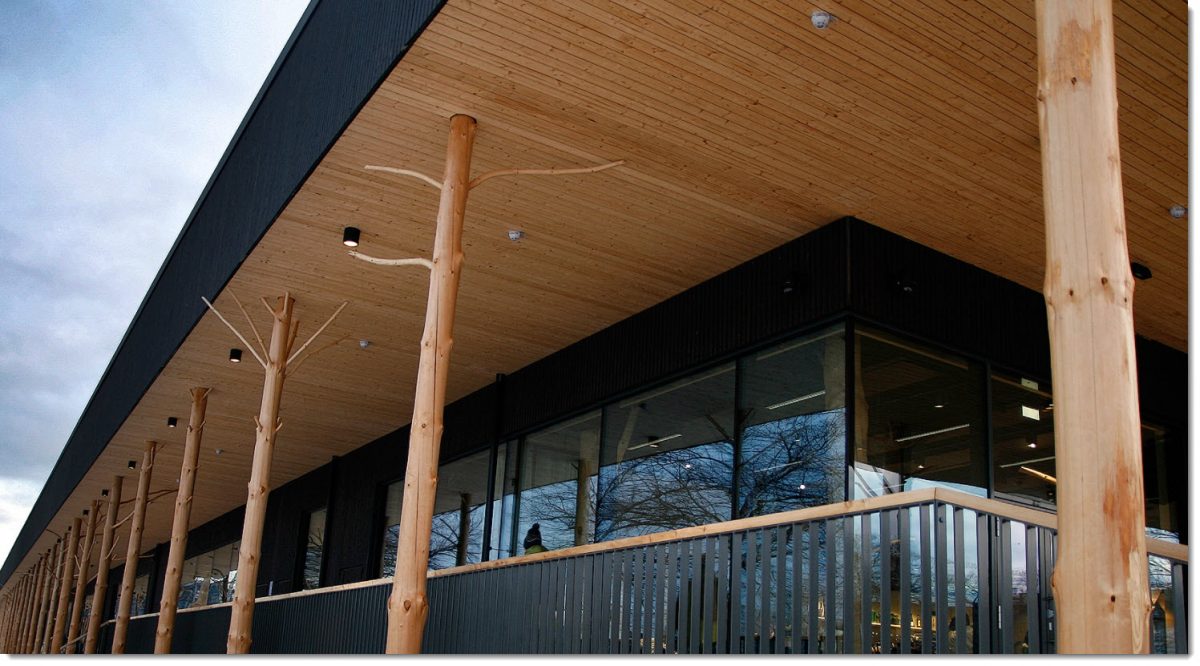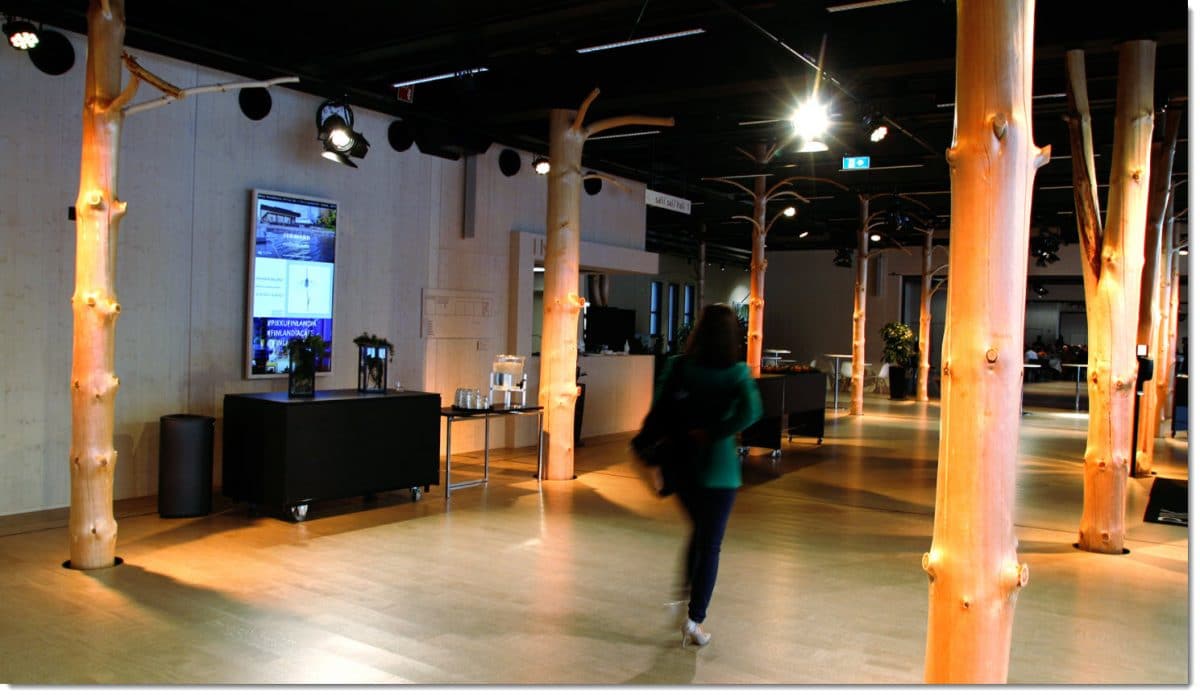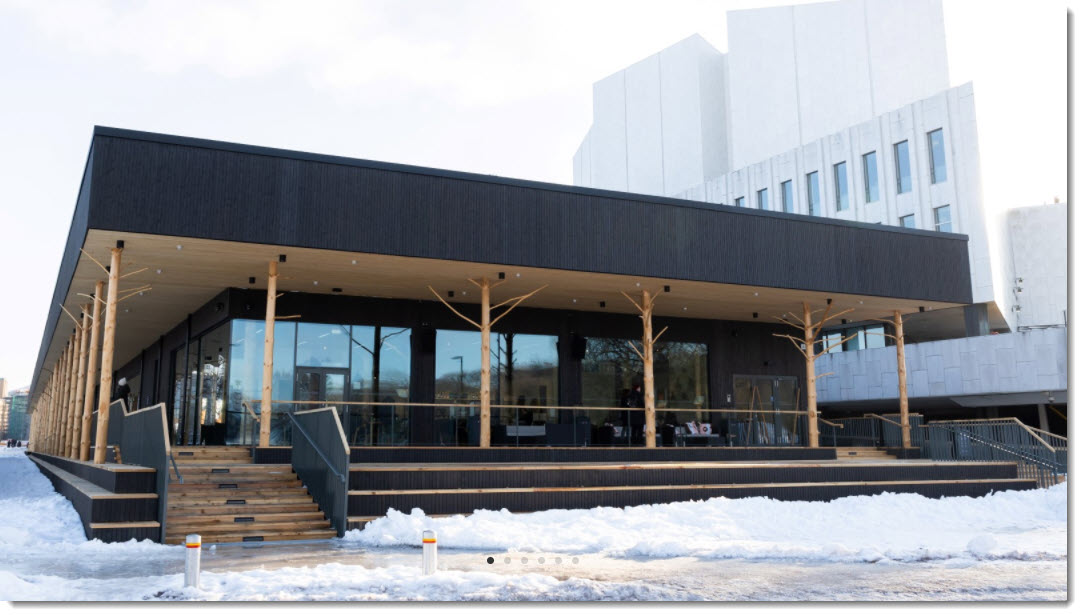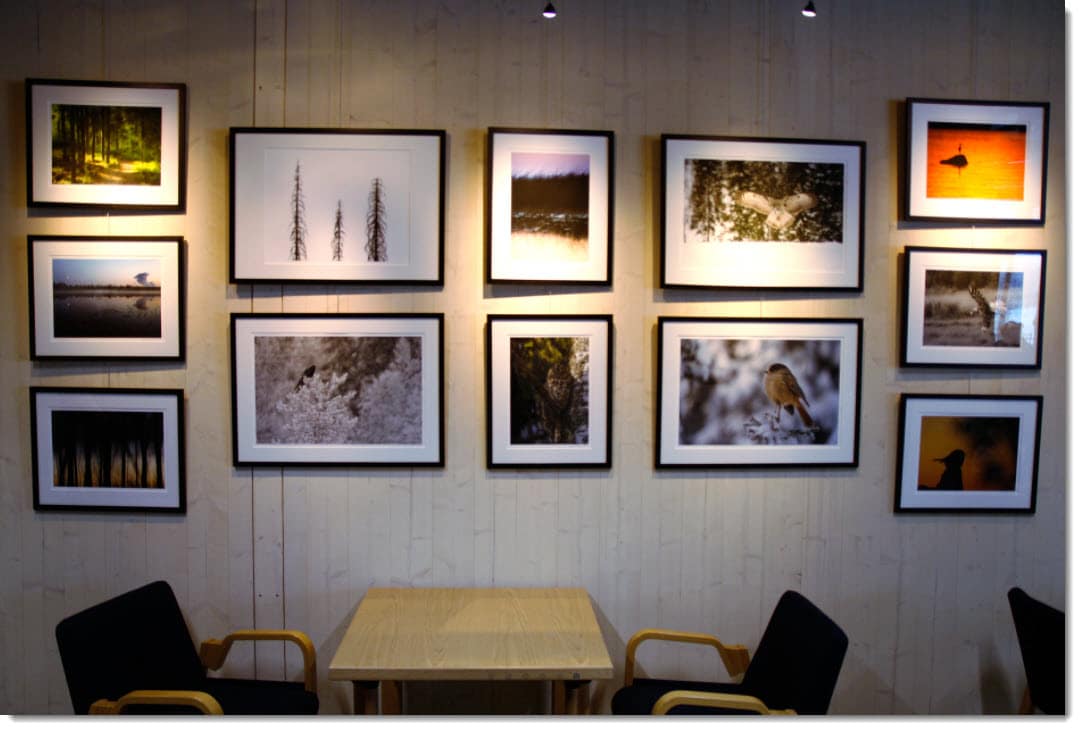Finlandia Hall presents its new venue Pikku-Finlandia in central Helsinki.

The iconic main building of Finlandia Hall, designed by Alvar Aalto, is now over 50 years old, which is why it was closed for renovation in January and will remain closed for about two and a half years. But due to the economic and cultural importance of Finlandia Hall as a venue for congresses and conferences that bring significant value to the city of Helsinki, a temporary substitute had to be found until the renovated hall opens.
The legendary Finlandia Hall teamed up with architects from Aalto University, who designed the new pavilion with principles of “circular economy, sustainability, and reusability” in mind, as Pekka Heikkinen, professor at Aalto University, explained in a presentation at the grand opening last week.
Pikku-Finlandia features an events hall that can be used for conferences, congresses, festivals, concerts, galas, etc., as well as a cafe that is open to all and even serves Lazy Saturday brunches. Both the hall and the cafe are already open. “You can have a seated dinner here for 800 people, or a cocktail party for up to 1,000 people,” said Johanna Tolonen, the managing director of Finlandia Hall.
The look of the building immediately reflects its underlying environment-conscious principles, both inside and out. Overlooking Töölönlahti Park in central Helsinki, the pavilion runs alongside and below the original Finlandia building, and it is primarily built with wood. While floor-to-ceiling glass windows line the front wall, the most prominent feature is the colonnade that runs along the length of the structure, composed of tree-like columns, which are in fact tree trunks with protruding branches.

Inside the event hall and cafe, those trees appear again as support pillars and serve as the central visual motif of Pikku-Finlandia. They create a kind of Finlandia Forest, which was precisely the name of the winning concept created by the team of architects at Aalto University.
“We wanted to bring a forest to Töölönlahti,” said director Johanna Tolonen, with whom we caught up after presentations were over and we had all eaten a delicious three-course meal inspired by traditional Finnish cuisine and using locally sourced traditional Finnish ingredients.
She explained that the structure of Pikku-Finlandia is modular and meant to be disassembled after three years, once the main building is open for business. But the structure can be reused at a different location, and will be, “either as a school or a nursery,” said Tolonen.

According to Tolonen, the new venue was in part inspired by Amsterdam’s RAI congress center and London’s Southbank Centre, especially in terms of bringing congress visitors closer to local life and the people living in the city. By the same token, the new venue also hopes to bring added value to Helsinki residents. This is the idea behind the open cafe and the open gallery, which currently features a photography exhibition showcasing Finnish nature.
There was excitement in the air about the new venue and about once again being able to host big events in Finlandia Hall. “I think that after the pandemic people are really looking forward to meeting other people and being in live events,” said the congress center’s director, and the mingling guests seemed to confirm this sentiment.

March, 14th 2022 – Text: Jan Artiček – Photographs: Tony Öhberg/FINLAND TODAY
